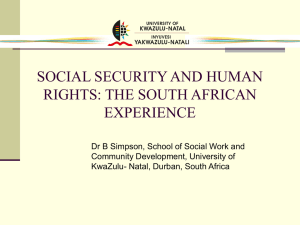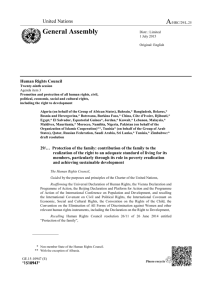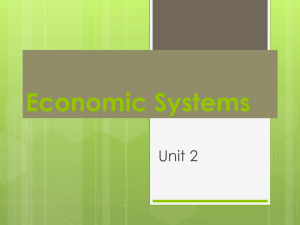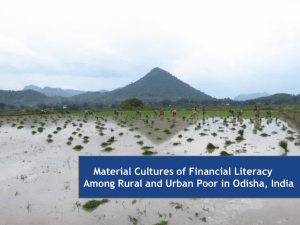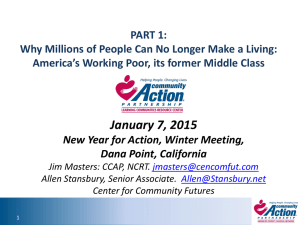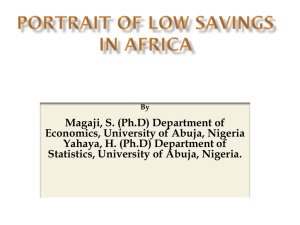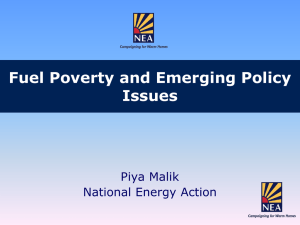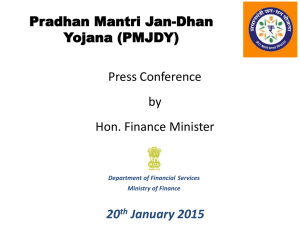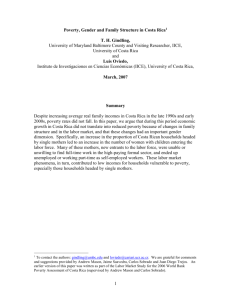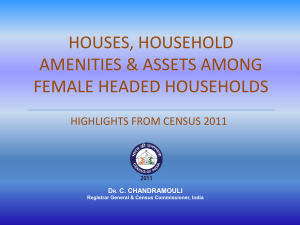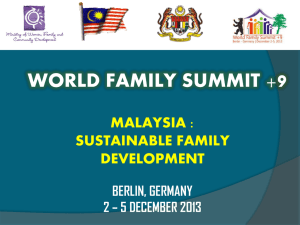Social Protection for Poverty and Vulnerability - FES
advertisement
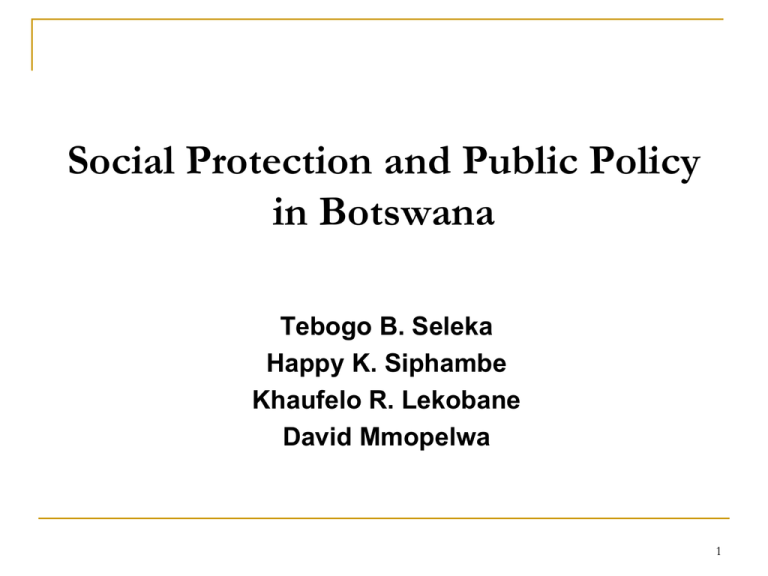
Social Protection and Public Policy in Botswana Tebogo B. Seleka Happy K. Siphambe Khaufelo R. Lekobane David Mmopelwa 1 Presentation Outline Introduction SP and Wider Development Policy Poverty and Vulnerability Assessment Program Effectiveness and Delivery Issues Graduation, Coordination and Related Issues Disincentive Effects Way Forward 2 Introduction - - Botswana has experienced impressive GDP growth since independence. It is now classified as a middle income economy. However the country does not do well in terms of other development indicators: Unemployment (particularly amongst the youth. Income poverty is high for a middle income economy. Income inequality is amongst the highest in the world. The income redistribution goal has become important. Social justice objective. Compassionate, just and caring nation pillar. 3 SP and Wider Development Policy SP interventions are ‘actions to: Assist individual, households, and communities to better manage risk Provide support to the critical poor (World Bank, 2000). SP is a system that aims to address vulnerabilities that put society at the risk of poverty or disasters (Gentilini, 2009). SP refers: “policies and practices intended to protect and promote the livelihoods and welfare of people who have lost out or stand to lose out in the processes of economic and social change and development, people whom these processes bypass, or people who are vulnerable to the effects of disasters and other shocks” (Marcus and Wilkinson,2002). 4 - - People more vulnerable to poverty include : Disabled people; Orphans; HIV infected; Elderly; Ethnic minorities,; IDPs; Households headed by widows and deserted women; Households Headed by children (Hoogeveen (2007). SP programs are part of a broader development policy and are not in themselves adequate to address poverty and vulnerability. Contribution of SP programmes: Reduce poverty and inequality directly They contribute to capita accumulation (promoting investment in education and productive assets) They are used to manage risk Allow government to implement beneficial reforms. 5 Poverty and Vulnerability Assessment Social Risk Management Strategies and Arrangements (Examples) SRM Strategy SRM Arrangement Informal Risk Reduction/ Less risky production Prevention Migration Proper feeding and weaning practices Risk Mitigation Portfolio Insurance Risk Coping Market-based In-service training Financial market literacy Multiple jobs Investment in human, physical and real assets. Investment in social capital (rituals, reciprocal gift-giving) Marriage/family Community arrangements Share tenancy Selling of real assets Borrowing from neighbours Intra-community transfers/charity Sending children to work Dissaving in human capital Source: Holzmann (2001); Hoogeveen et. al. (2005). Public Labor standards Good macroeconomic policies AIDS and other disease prevention Investment in multiple financial assets Protection of property rights (especially for women) Support for extending financial markets to the poor Disability, accident and other personal insurance Crop, fire insurance Mandated/provided insurance for unemployment, old age, disability, survivorship, sickness. Selling of financial assets Borrowing from Banks Transfers/Social assistance Subsidies Public works 6 Vulnerable Groups -Based on Poverty Profiles Rural Dwellers Agricultural Households. Households with Many Dependents Households with Low Educational Attainments Children-Headed Households Elderly-Headed Households Orphans. 7 Risk Assessment: types of risk (i) Natural, (ii) Health, (iii) Lifecycle, (iv) Social, (v) Economic, (vi) Environmental and (vii) Political risks. Health Risks – malnutrition, HIV/AIDs, Natural risks – drought, floods, heavy rainfall, strong winds, animal and crop diseases. Economic risks – unemployment, inflation. Lifecycle risks – disability, old age, death. Social risks – illiteracy, crime. Environmental risk – pollution, deforestation, land degradation Political risk – political unrest 8 Publicly Provided SP instruments 1. 2. Risk prevention program Prevention of Mother to Child Treatment (PMTCT) Programme Risk mitigation programs Drought Monitoring and Response Botswana Public Officers Pension Fund (BPOPF) Minimum Wage Gratuity and Severance 9 3. Risk coping instruments Destitute Persons Programme, Government Pensions Programmes Supplementary Feeding Programmes Orphan Care Programme Community Home Based Care Programme Remote Area Development Programme Ipelegeng. School Fees Exemption Agricultural support programmes (LIMID/ISPAAD) ART Programme 10 Risk Assessment Vulnerable Group Remote/Rural area dwellers Type of Risk Unemployment; Illiteracy Women headed households Families with many dependents Widow headed households Households with low education/skills Unemployment Low income Unemployment; Low income Malnutrition; HIV/AIDS; Unemployment; Low wages Unemployment; Malnutrition; Low income Low income Low income; Lack of assets Droughts; Animal and Crop diseases; Floods. High prices; Low income Children headed households Elderly headed households Orphans Subsistence agriculture households Households with paraffin /wood as a source of fuel for cooking Infants and children aged below 5 years Disabled individuals Street Children Youth Malnutrition; HIV/AIDS; Illness; Mortality Disability Malnutrition; Illness; Substance abuse Unemployment; Substance abuse; Unplanned pregnancies; HIV/AIDS & other STIs Existing Programme RADP Ipelegeng Ipelegeng Ipelegeng Ipelegeng PSFP; School fee exemption; ART; Supplementary feeding Orphan care programme OAP; DPP Orphan care programme ISPAAD; LIMID; Early Warning DPP PMTCT; VGFP; Immunization DPP No SP programme Ipelegeng; National internship programme (NIP) 11 Program Effectiveness and Delivery Issues 12 Program coverage and Targeting Coverage and targeting are said to be good for the orphan care and OAP schemes. Destitute programme – some needy families in the villages who are not covered by the programme. Not all needy students are registered in the programme. Criteria for enrolment into CHBC exclude some eligible individuals – based on destitute program guidelines The RADP reaches most of the eligible individuals. 13 Program Delivery Issues Delayed and Incomplete Delivery of Benefits (uniform and private clothing, food packages, cash payments, psycho-social support, rehabilitation, housing assistance for the destitute). Poor Quality Packages/Service (poor service in public offices, removal of beneficiaries from the list, long queues at payment points without required facilities – toilets, provision of cheaper and lower quality products, poor food preparation at schools). Abuse, Fraud and other Unfair Practices (abuse of food coupon by holders and shops, inflation of prices by shops using coupons including price discrimination practices, selling food on credit to coupon holders, political interference by councillors or parliamentarians) 14 Poverty impacts of programs - - Traditional coping strategies Poorer households are more likely to benefit from the programs. Social safety nets accounted for a higher proportion of household income for poorer households. Programmes reduced the poverty incidence by 10 percentage points (2002/03). Programmes which better targeted the poor were Clinic Rations, RADS package, Needy Students, Destitute and Drought Relief. OAP, WW II Veterans Pension, Orphan Care, CHBC and School meals had low targeting ratios for the poor. 15 - - Asset transfer and input subsidy programs ISPAAD is expected to have reduced food insecurity and poverty because of increases in output in the subsistence economy. However crop yields remain low. Program sustainability is questionable. Tractor owners stand to gain more than farmers. Given that LIMID is targeted at resource poor farmers/individuals and that it has assisted many people, it should have contributed to poverty reduction. 16 Graduation, Coordination and related issues Too many implementing public agencies. Graduation from SP programs to economic program unclear due to lack of coordination. Skills Development essential for graduation (eg Ipelegeng) Ipelegeng sometimes preferred over other SP programs (eg leather works), 17 Disincentive Effects Welfare Dependency argument. Literature mixed (work disincentives vs investment In Botswana evidence of work disincentives in agriculture found. Ipelegeng may be preferred due to favorable wages. 18 Way Forward Place programs under one roof to improve coordination. Consider program synergies to promote graduation (eg a combination of asset and cash transfers to help rebuild productive capacity and sustainability). Consider cash transfers in place of food transfers to promote investment and minimize work disincentive effects. 19 Thank You 20
